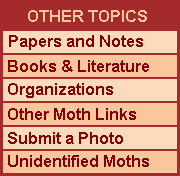

I am from the country of St. Vincent and the Grenadines located in the southern Caribbean. For the past 12 years I have been living in the Grenadines - a group of very small Islands the larger of which include Bequia, Mustique, Canouan, Mayreau and Union. My interest in nature began many years ago but has recently become a serious effort in response to the rapid tourism development presently taking place on these micro islands. I am actually now on a kind of "salvage operation" trying to record what we have before most of it is lost. I formed a grass-root environmental organization for educational and awareness purposes but generally we remain helpless amid this massive unregulated tourism. I am certainly no scientist but in a general way, I do know our local flora and fauna and have recently discovered some new species including a very beautiful but previously unknown lizard - Gonatodes daudini. I have just completed a "Natural History of Mustique," and a basic field guide to the "Spiders and their Relatives of St. Vincent and the Grenadines". As stated, my dream is to document our biodiversity and to use it for local awareness with the ultimate aim of motivating our students and people to protect what we do have left.
I am presently working on our moths, many of which are troublesome to identify. Very little work has been done in our area. Matthew Barnes, an English lepidopterist has, however, done some recent work and has been extremely generous and helpful in getting this moth project off the ground. I am grateful to the Moth Photographer's Group for facilitating this website as I work to get my moths identified. I hope that you might assist me if you recognize any of my unidentified or miss-labeled photos.
The Grenadine Islands do have a very marked wet and dry season and thus a semi-deciduous Dry Forest habitat prevails. The rains usually begin in June and peter out in December. Recent climate change has resulted in a more blurred cut-off and commencement of seasons. Rainfall on these micro islands averages 45 inches per annum while the mountains of the larger island of St Vincent get over 200 inches. The average wind speed is 8 to 12 knots, and our humidity fluctuates from 96% to about 60% with a seven-year average of 75%. There is a very narrow range of temperature fluctuation with the average maximum of 86° F and an average minimum of 77° F. Our daylight hours vary only slightly with sunrise at 6:00 a.m. and sunset at 6:00 p.m. - there is no real extended period of dusk or dawn. When we are well into the month of October, the vegetation is green, the caterpillars are becoming fat, and the moths are only then beginning to pupate and fly in slightly significant numbers.
|
|



